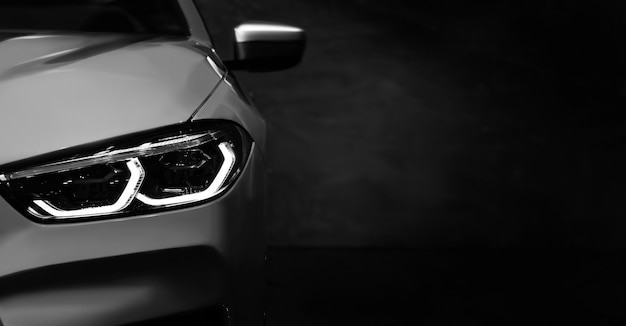6 Easy Facts About Hikari Led Headlight Shown
Table of ContentsWhat Does Hikari Led Headlight Mean?The smart Trick of Hikari Led Headlight That Nobody is Talking AboutSee This Report about Hikari Led Headlight


These are physically and electrically interchangeable with H4 bulbs - hikari led headlight. Similar optical methods are utilized, however with different reflector or lens optics to produce an US beam pattern instead of a European one. Each system has its benefits and drawbacks. The American system traditionally permitted a higher total quantity of light within the low beam, because the whole reflector and lens location is used, but at the very same time, the American system has actually typically offered much less control over upward light that triggers glare, and for that factor has been mostly turned down outside the United States.
The high beam is normally a rough copy of the low beam, shifted slightly upward and leftward. The European system typically produced low beams including less total light, because only 60% of the reflector's surface area is utilized to develop the low beam. However, low beam focus and glare control are simpler to accomplish.
Complex-reflector innovation in mix with brand-new bulb styles such as H13 is enabling the development of European-type low and high beam patterns without making use of a Graves Shield, while the 1992 US approval of the H4 bulb has made traditionally European 60%/ 40% optical area departments for low and high beam common in the US - hikari led headlight.
Dual-beam HID headlamps employing reflector technology have actually been made utilizing adjustments of both strategies. In this system a filament lies at one focus of an ellipsoidal reflector and has a condenser lens at the front of the lamp. A shade lies at the image airplane, in between the reflector and lens, and the projection of the leading edge of this shade offers the low-beam cutoff.
The shade may be reduced by a solenoid activated pivot to offer low beam, and eliminated from the light path for high beam. Such optics are called BiXenon or BiHalogen projectors. If the cutoff shade is repaired in the light path, different high-beam lamps are needed. The condenser lens may have slight fresnel rings or other surface area treatments to lower cutoff sharpness.
Not known Details About Hikari Led Headlight
Hella introduced ellipsoidal optics for acetylene headlamps in 1911, but following the electrification of vehicle lighting, this optical method wasn't utilized for many why not try this out decades. The first contemporary polyellipsoidal (projector) automotive lamp was the Super-Lite, an auxiliary headlamp produced in a joint venture between Chrysler Corporation and Sylvania and optionally installed in 1969 and 1970 full-size Dodge cars.
Projector main headlamps first appeared in 1981 on the Audi Quartz, the Quattro-based concept cars and truck created by Pininfarina for Geneva Vehicle Beauty Parlor. [] Developed basically simultaneously in Germany by Hella and Bosch and in France by Cibi, the projector low beam allowed accurate beam focus and a much smaller-diameter optical plan, though a much deeper one, for any provided beam output (hikari led headlight).
The primary drawback of this type of headlamp is the requirement to accommodate the physical depth of the assembly, which may extend far back into the engine compartment. The first electrical headlamp light source was the tungsten filament, operating in a vacuum or inert-gas environment inside the headlamp bulb or sealed beam.

Tungsten-halogen innovation (likewise called "quartz-halogen", "quartz-iodine", "iodine cycle", and so on) increases the effective luminous effectiveness of a tungsten filament: when operating at a higher filament temperature level which leads to more lumens output per watt input, a tungsten-halogen lamp has a a lot longer brightness life time than comparable filaments running without the halogen regeneration cycle.
European-designed halogen headlamp lights are normally configured to offer more light at the very same power intake as their lower-output plain tungsten counterparts. By contrast, numerous US-based styles are set up to minimize or reduce the power consumption while keeping light output above the legal minimum requirements; some US tungsten-halogen headlamp lights produce less initial light than their non-halogen equivalents.
There was an improvement in seeing range with US halogen high beams, which were allowed for the very first time to produce 150,000 candela (cd) per lorry, double the non-halogen limit of 75,000 cd but still well shy of the global European limit of 225,000 cd. After changeable halogen bulbs were allowed in US headlamps in 1983, advancement of United States bulbs continued to favor long bulb life and low power consumption, while European designs continued to prioritise optical precision and maximum output.
An Unbiased View of Hikari Led Headlight
It was presented in 1962 by a consortium of European bulb and headlamp makers. This bulb has a get redirected here single axial filament that consumes 55 watts at 12. 0 volts, and produces 1550 lumens 15% when run at 13. 2 V. H2 (55 W @ 12. 0 V, 1820 lm @ 13.